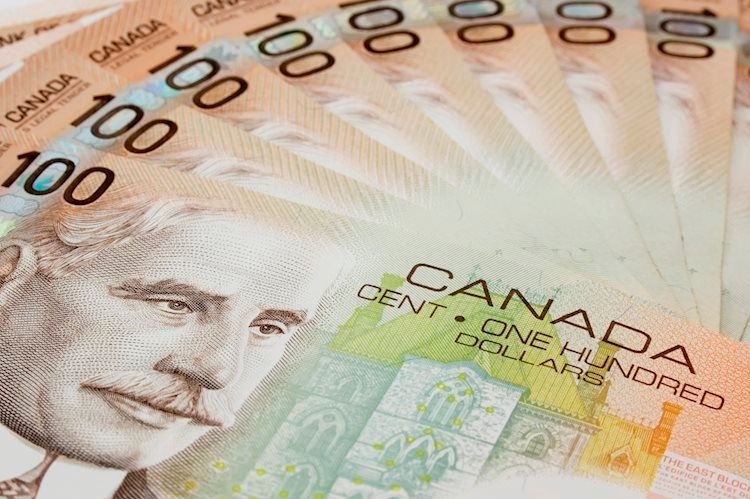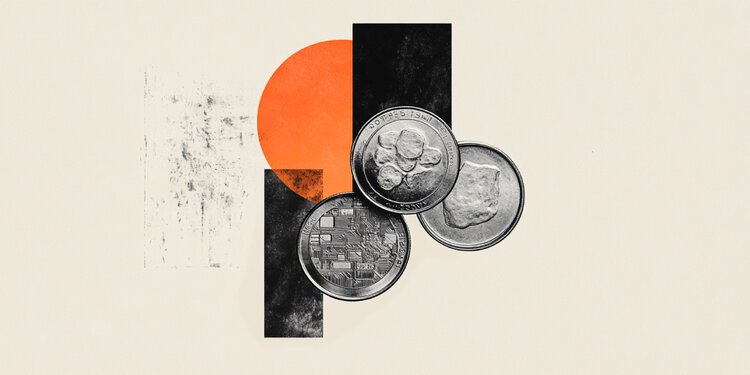- USD/CAD trades with mild gains around 1.3755 in Thursday’s early Asian session.
- The expectation of a slower pace of Fed rate cuts underpins the USD broadly.
- The BoC is expected to cut rates by 50 bps next week.
The USD/CAD pair posts modest gains to near 1.3755 during the early Asian session on Thursday. The US Dollar Index (DXY) rose further to multi-week tops above 103.50 amid rising bets that the US Federal Reserve (Fed) will proceed with modest interest rate cuts over the next year. Later on Thursday, the US Retail Sales will take centre stage.
The Greenback edges higher as traders see the Fed gradually lowering interest rates in the remainder of the year. Traders have priced in a nearly 94% chance of a 25 basis points (bps) Fed rate cut in November, according to the CME FedWatch tool.
Minneapolis Fed President Neel Kashkari said earlier this week that future interest rate cuts would be “modest” and emphasized that policy decisions would depend on economic data. Meanwhile, San Francisco Fed President Mary Daly said on Tuesday that there is room for the Fed to lower rates further, following last month’s half point reduction in fed funds to 4.75% to 5.00%
Additionally, persistent geopolitical tensions in the Middle East and US election uncertainty could provide some support to the USD. “Volatility … and the U.S. dollar tend to rise in tandem going into the U.S. election, especially with the rise of (former U.S. President) Trump in betting markets and the 50 basis-point (bp) cut being out of the picture for the Fed at least in November. This would be the best case for the dollar in the short term,” said Boris Kovacevic, global macro strategist, at Convera in Vienna, Austria.
On the Loonie front, a fall in crude oil prices might weigh on the commodity-linked Canadian Dollar (CAD) as Canada is the largest oil exporter to the United States. Furthermore, the expectation that the Bank of Canada (BoC) would accelerate its easing cycle after September’s inflation data might cap the CAD’s upside. Statistics Canada reported on Tuesday that the Consumer Price Index (CPI) rose 1.6% YoY in September, the slowest annual pace of inflation since February 2021.
“I think this morning’s inflation number has really solidified the case for the Bank of Canada to cut by 50 basis points next week,” noted Charles St-Arnaud, the chief economist with Alberta Central and former economist at the Bank of Canada.
Canadian Dollar FAQs
The key factors driving the Canadian Dollar (CAD) are the level of interest rates set by the Bank of Canada (BoC), the price of Oil, Canada’s largest export, the health of its economy, inflation and the Trade Balance, which is the difference between the value of Canada’s exports versus its imports. Other factors include market sentiment – whether investors are taking on more risky assets (risk-on) or seeking safe-havens (risk-off) – with risk-on being CAD-positive. As its largest trading partner, the health of the US economy is also a key factor influencing the Canadian Dollar.
The Bank of Canada (BoC) has a significant influence on the Canadian Dollar by setting the level of interest rates that banks can lend to one another. This influences the level of interest rates for everyone. The main goal of the BoC is to maintain inflation at 1-3% by adjusting interest rates up or down. Relatively higher interest rates tend to be positive for the CAD. The Bank of Canada can also use quantitative easing and tightening to influence credit conditions, with the former CAD-negative and the latter CAD-positive.
The price of Oil is a key factor impacting the value of the Canadian Dollar. Petroleum is Canada’s biggest export, so Oil price tends to have an immediate impact on the CAD value. Generally, if Oil price rises CAD also goes up, as aggregate demand for the currency increases. The opposite is the case if the price of Oil falls. Higher Oil prices also tend to result in a greater likelihood of a positive Trade Balance, which is also supportive of the CAD.
While inflation had always traditionally been thought of as a negative factor for a currency since it lowers the value of money, the opposite has actually been the case in modern times with the relaxation of cross-border capital controls. Higher inflation tends to lead central banks to put up interest rates which attracts more capital inflows from global investors seeking a lucrative place to keep their money. This increases demand for the local currency, which in Canada’s case is the Canadian Dollar.
Macroeconomic data releases gauge the health of the economy and can have an impact on the Canadian Dollar. Indicators such as GDP, Manufacturing and Services PMIs, employment, and consumer sentiment surveys can all influence the direction of the CAD. A strong economy is good for the Canadian Dollar. Not only does it attract more foreign investment but it may encourage the Bank of Canada to put up interest rates, leading to a stronger currency. If economic data is weak, however, the CAD is likely to fall.

























